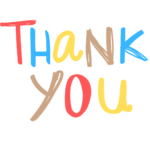
Praguers or you too cross-country, have you thought about where those beautiful pictures, reliefs or sculptures came from above the entrances of old houses in Prague? Why did anyone do such a job with them at all? Or are they on houses just for decoration? Several times a day we walk past them just unnoticed or they catch our eye with their decoration and picturesqueness. I mean the old house signs on the facades of town houses.
The route leads through the streets: Úvoz street, Nerudova street, The Valdštejnská street, Wallenstein Square, Tomášská street, Thunovská street, New castle stairs, To The castle street and back
A TRIP TO THE HOUSE SIGNS WILL TAKE YOU TO THE MOST BEAUTIFUL CORNERS OF OLD PRAGUE
There are few cities in the world where you will find beautiful town houses with richly decorated facades. And Prague is definitely one of them. When I was little, my father and I took trips from South Moravia to Prague. While other children wanted a walkman or some materials things, I wanted a trip to Prague. I longed to look into the streets full of “pictures.” And I always wanted to live here. My dream has come true and I have been living in Prague for a few years. Not of course in the center. 🙂 Next time, I need to specify my wishes better. :-)) Even so, I have the opportunity to walk through the beautiful streets every day.
TAKE A SHORT TRIP AROUND PRAGUE WITH ME, BECAUSE WE WILL DISCOVER THE “OLD HOUSE SIGNS”.
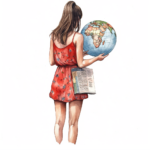
MY TIP:
Take the kids with you! Children will get to know corners of Prague that they have probably not visited before. They will see the capital with different eyes and can playfully learn something about the history of the houses of the Old Town of Prague.
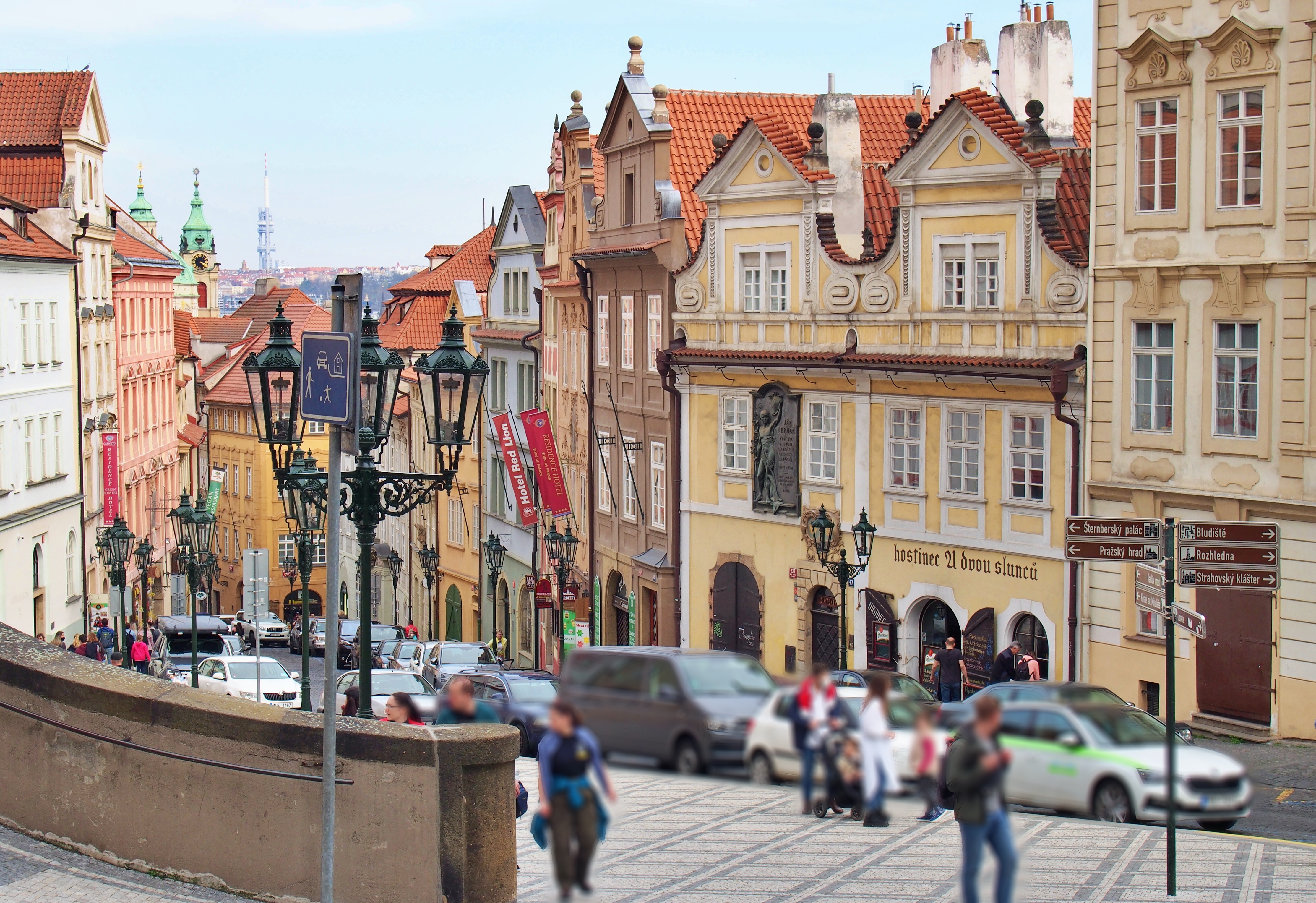
WHERE DID THE HOUSE SIGN ACTUALLY COME FROM?
This rich symbolism can often be mysterious to us. However, the house signs had a purely practical function and their origins date back to the 14th century. In a way, they are all cheerful and mysterious. The original meaning of house signs was to facilitate orientation in long confusing rows of houses and in a tangle of alleys, but it also arose as part of a fashion to draw attention to oneself.
It was also very closely connected with its owner and his profession (masons, miners, bakers, etc.). Various motifs and symbols were used for marking. The most common animals were the bear, the snake, the fox or even the unicorn. For the time of Charles IV. they were created for the owners of burgher houses by so-called scorpions. The townspeople tried to imitate aristocratic coats of arms with their signs and thus have their own emblem. But even the poor did not want to be left behind. This is how their houses were called according to building details such as the House at the Red Doors or the House at the Three Steps. The ideas were proposed by the owners themselves, sometimes by city officials. Some house signs were finished works of art. Sometimes it was a sculpture, other times a painting or relief. It was mostly located above the entrances to the houses. For the most part, it also had a deeper meaning, depicting a certain symbolism or a given trade of the owner of the house.
AND WHAT ABOUT HOUSE NUMBERS?
The house numbers were not introduced until Maria Theresa in 1770. As part of the Josephine reforms, all houses in the Habsburg monarchy had to be numbered. The pictures on the facades were thus replaced by descriptive numbers, which are still used today. It was purely a practical solution. But I think she took away their magical symbolismes for the houses.
Nowhere else have so many signs been preserved that replaced house numbers, and it also suggested something about the owner of the house. In this article, I will reveal to you what some house signs symbolize.
I do not intentionally give house numbers, because you will be more happy when you find the symbols yourself.
ÚVOZ STREET
Úvoz Street is a steep road with houses on one side only. On the other, it is bordered by a stone wall, behind which vineyards have spread since time immemorial.
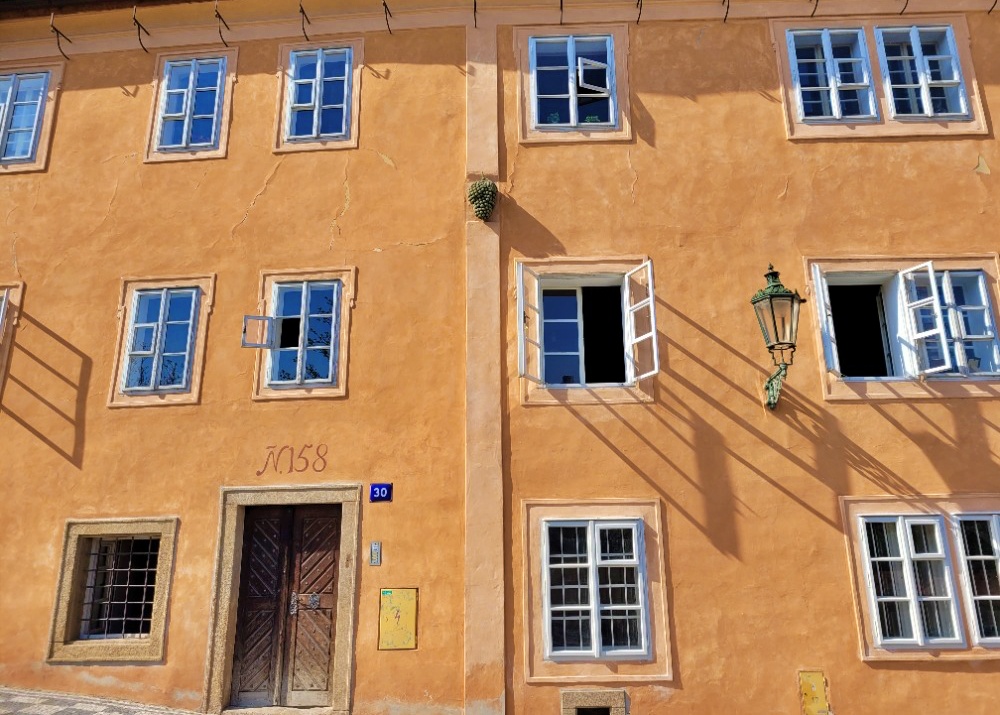

AT THE WHITE BALL
The last star of the silver screen, Zita Kabátová, spent her childhood in this house. Until the end of her life, this First Republic star was very active, optimistic and fond of remembering her work. Compared to other actresses, she had one peculiarity. She basically filmed in her own clothes. Her great admirers included actor Oldřich Nový or comedian Vlasta Burian. He once said of her: “She would stand for a sin!” She filmed over sixty films. My favorites are Station Master, Ball Lightning, Želary and Autumn Spring.
Personally, I like the story of Zita’s memorable diamonds, which she gave to a famous goldsmith, who created a beautiful ring for her. In Malá Strana, she visited a seamstress, who offered it to the actor Vlastimil Brodský, who bought it for his then wife Jana Brejchová, famous Czech actress. She received 5 000 CZK for them (which was not bad money at the time) and later bought an old house in Kouřim for herself. It became her second home.
Luděk Marod, a painter and author of the panoramic Battle of Lipany, once lived in the same house.
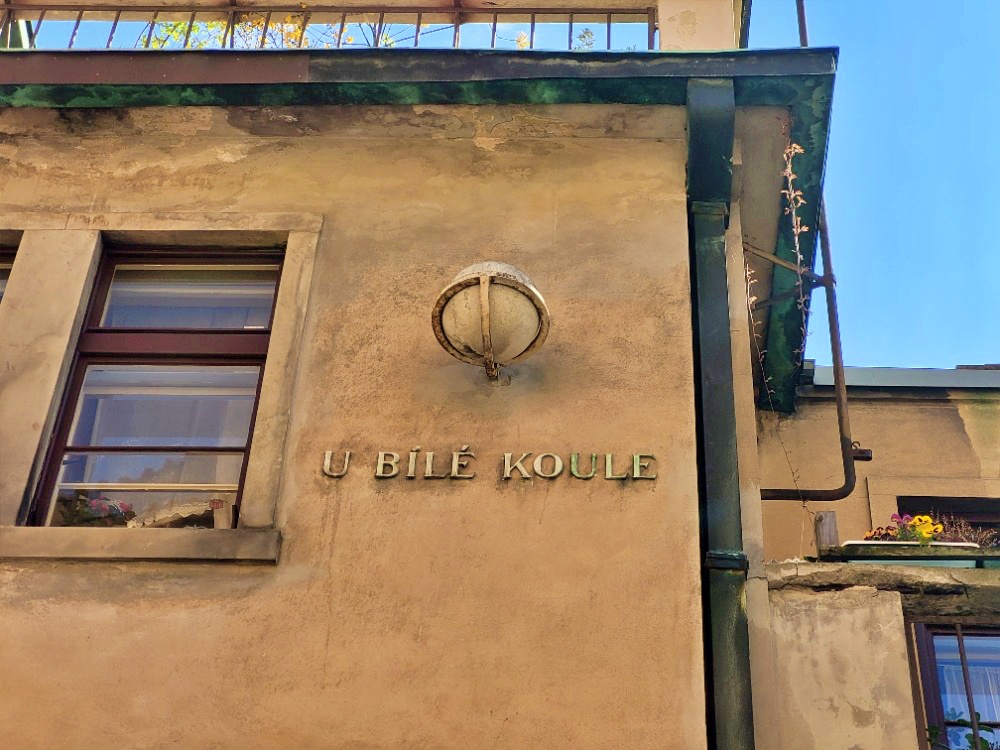
AT THE GREEN GRAPE
Here, in this house, the symbol of the vine recalls the wine-growing tradition in the Strahov gardens.
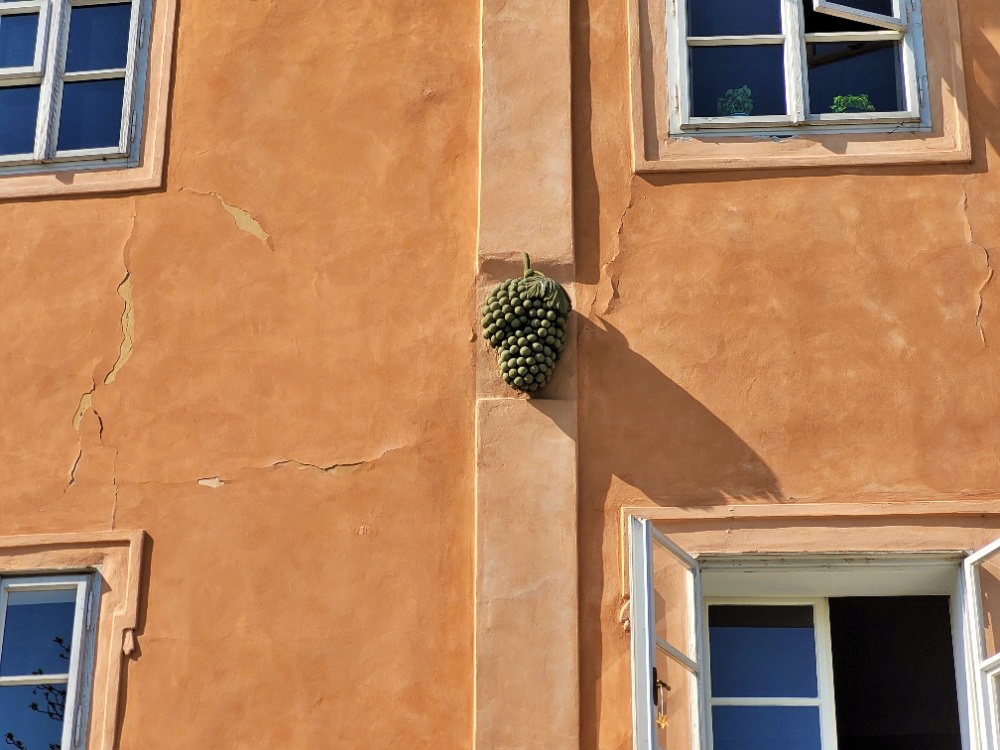
AT THE THREE RED HEARTS
It is said that a father lived in the house with three daughters who did not get married. And so it occurred to him to draw their attention to his house sign.

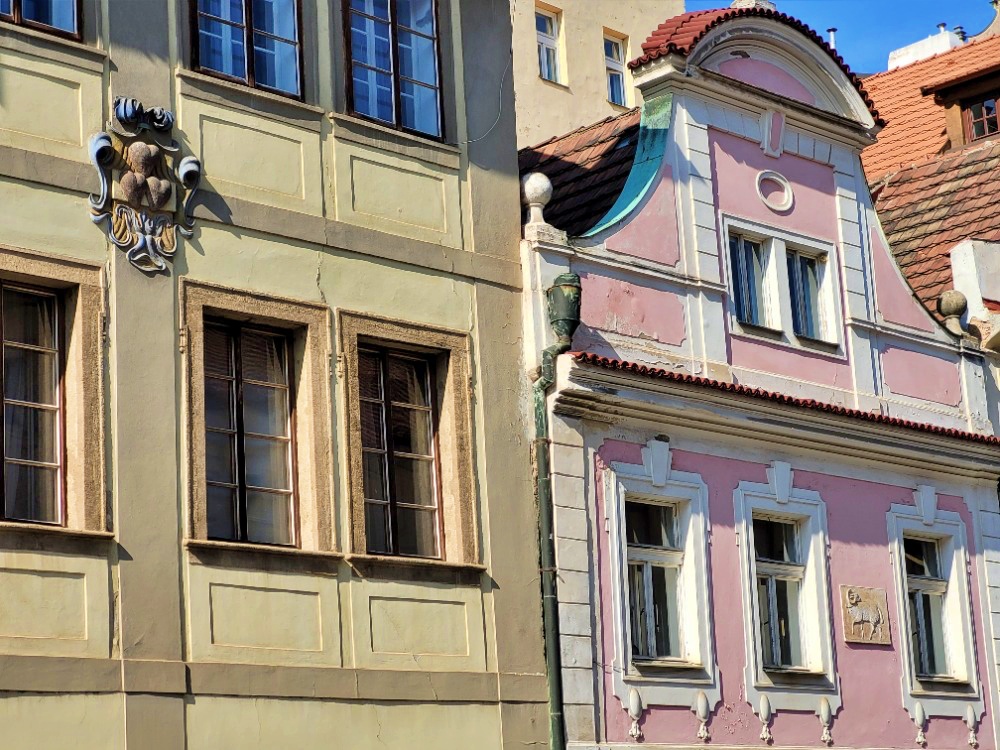
AT THE THREE GOLDEN AXES
In the 14th century, more than 70 master carpenters worked in Prague. Most of them were located in the New Town, where there was a “wooden market“. The sign was definitely placed on the house by a carpenter when the house rose from the incinerator after the fire in Malá Strana from 1541. It is interesting that there was a passage to the Town Hall stairs. But watch out for axes! If, for example, an ax had a lion in its paw, it could be the butcher’s house.

AT THE WHITE LAMB
There was a whole herd of lambs of various colors, shapes and sizes on Prague houses. They keep a beautiful third place in the frequency of animals, right after lions and deer. And why did the ram win over the sheep, for example? This is because the sheep is timid, foolish and fickle, but the lamb symbolizes strength and fertility. The lamb was sacred to the ancient herdsmen. This house goes beyond all previous features. The white lamb in this house he didn’t have it easy. It is mentioned in the chronicle from the beginning of the 17th century as a house sign, but there is no mention of it in other books. He probably changed his form, as evidenced by the fact that in 1912 he was left with only sculptures of his head, which were eventually removed from the house. In the more modern version, he finally returned to his place. The lamb was created by sculptor Vincenc Vingler.

NERUDOVA STREET
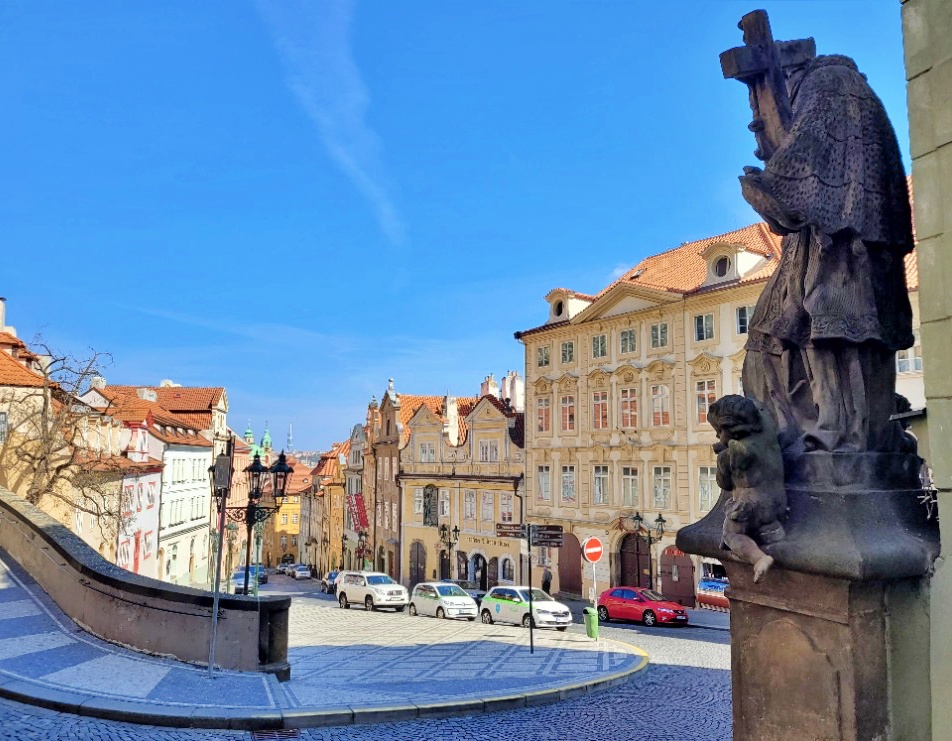
AT THE TWO SUNS
One of the most famous houses in Nerudova Street is without a doubt this house. Its name carries the message that in front of this house it is better to turn thoughts to the past than to the future. This motif then in the past symbolized immeasurable power, justice, but also the ruler of the day. The sun used to be very common among Prague’s house signs. In 17th century, the house belonged to rich Prague goldsmiths. A retiree from the Napoleonic Wars, named Antonín Neruda, used to have a newsagent here. Yes, it was the father of the writer Jan Neruda who spent his childhood here. It was here where Neruda situated the stories and fates of the characters from his Malostranské short stories.

This house was especially famous for the writer Jan Neruda, who also mentions it in his short stories. The restaurant has made history mainly as a refuge for Chartists and the underground. You can read about it in the books of Ivan Martin Jirous or Egon Bondy. The pub has changed its name several times. It was even called At Neruda. Former President Václav Havel was one of the regular visitors to the inn.

AT THE RED LION
Look well at what the lion is holding in his hand! It’s a cup. I think the cup was also with wine, because if you look well at the lion, you will find that he is smiling suspiciously. He probably drank. 🙂
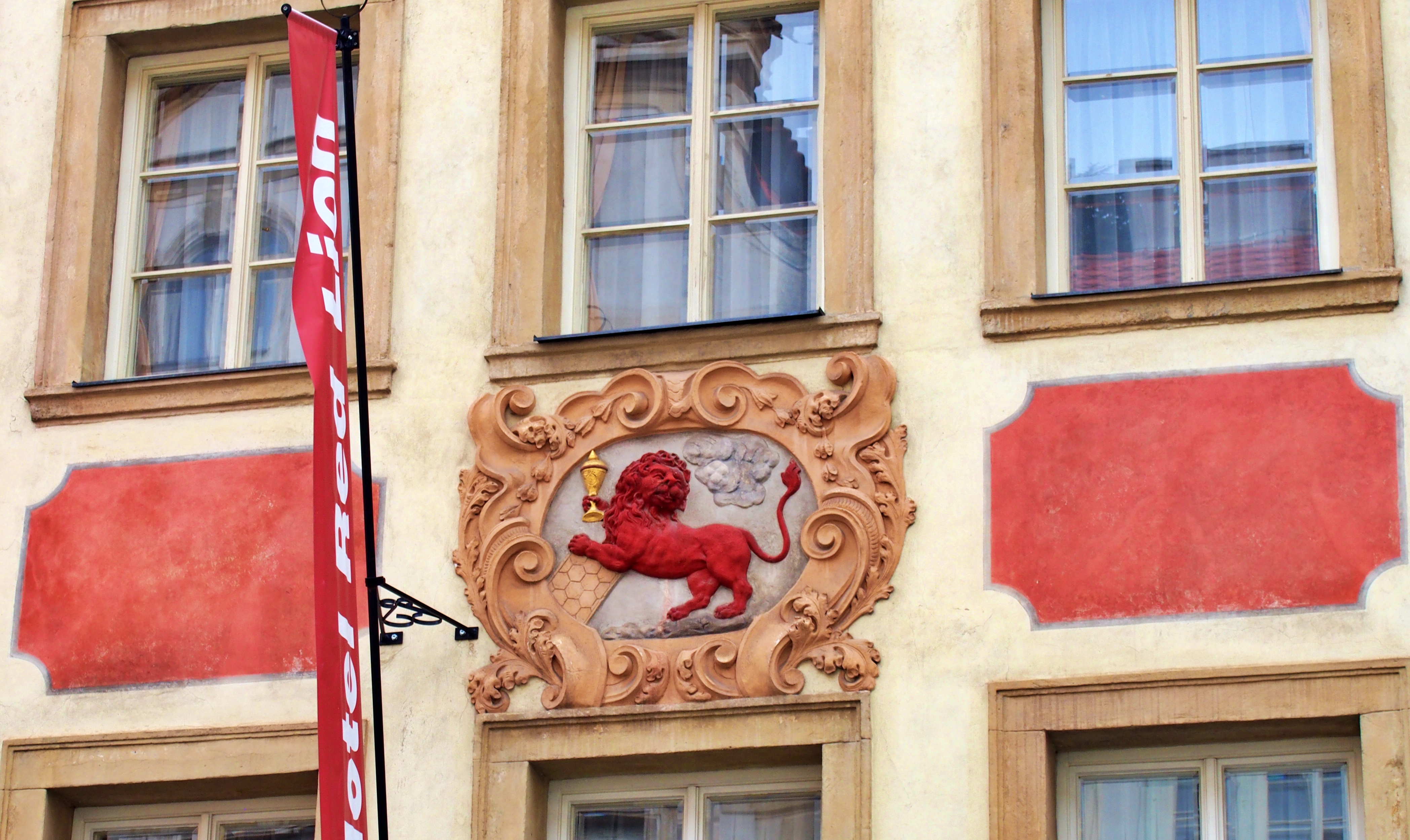
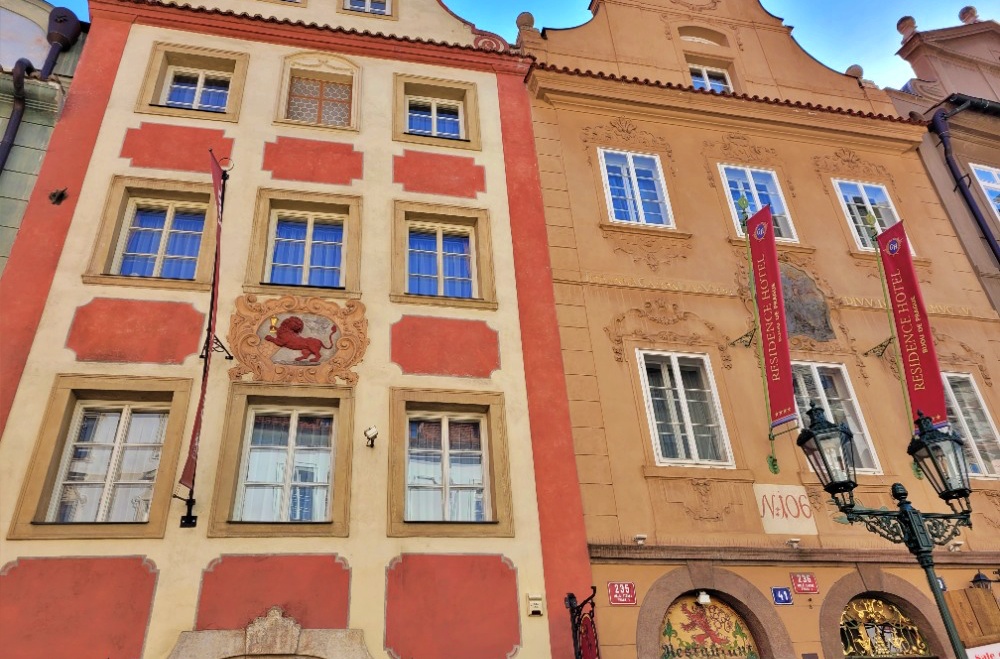
AT THE GREEN CRAYFISH
This house differs from other houses at first sight. The house has two entrances and a different number above each one, even though it is basically one and the same house. The house was once called At Saint. Jan Nepomucký, because he lived here during his studies.
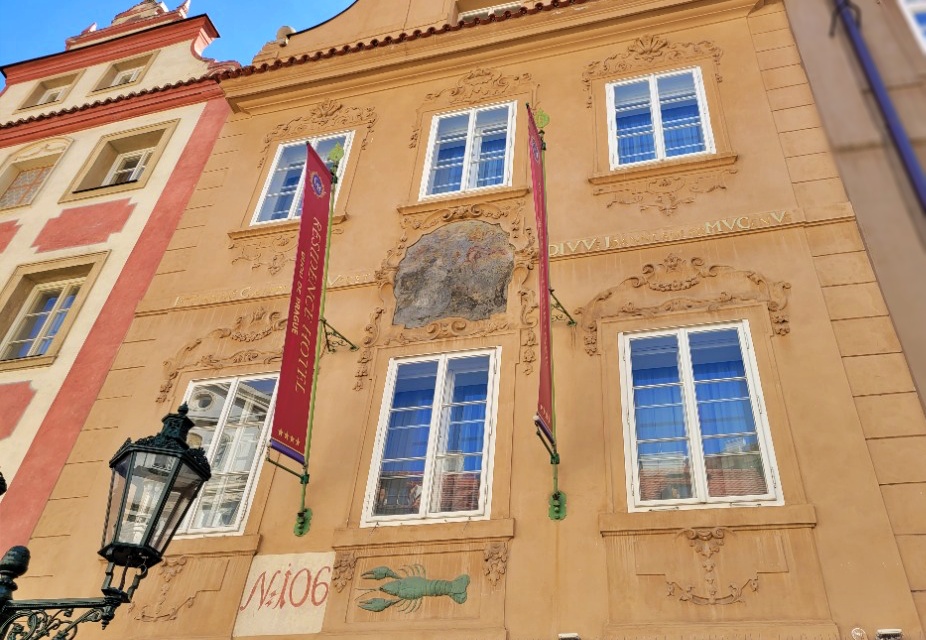
AT THE WHITE BEET
When will you walking down in Neruda Street, you may come across beets, for example. The house sign was created in the 17th century on a Renaissance house where farmers lived. They grew beets white, yellow, red and pink. Cźech actor Josef Kemr was a very famous inhabitant. Children will definitely remember him from the fairy tale Give the Devil His Due, where he played the king, or from the fairy tale The Incredibly Sad Princess, where he played one of the thinner advisers. Josef Kemr was such a very popular character in Malá Strana. His hallmark was car call the Trabant, which became a legend, as well as his riding style. He rushed through Prague in various directions and often through forbidden streets, so in the opposite direction. He did not respect any prohibitions. 🙂
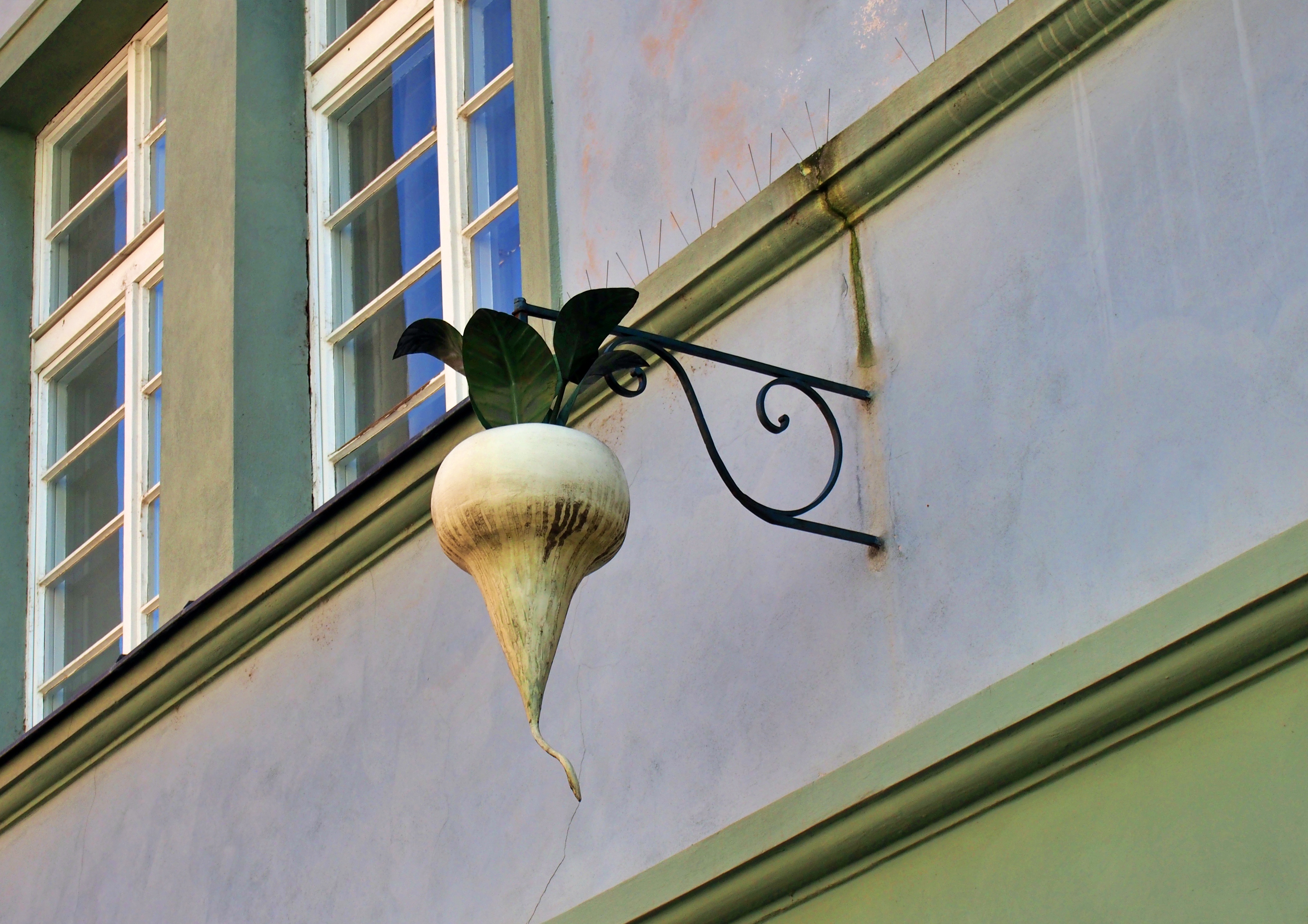
AT THE RED LAMB
The house dates from the 19th century. It is said that a man of “lamb” nature lived here in the past. But another legend says the opposite. The owner of the house was hot-tempered and violent in nature.
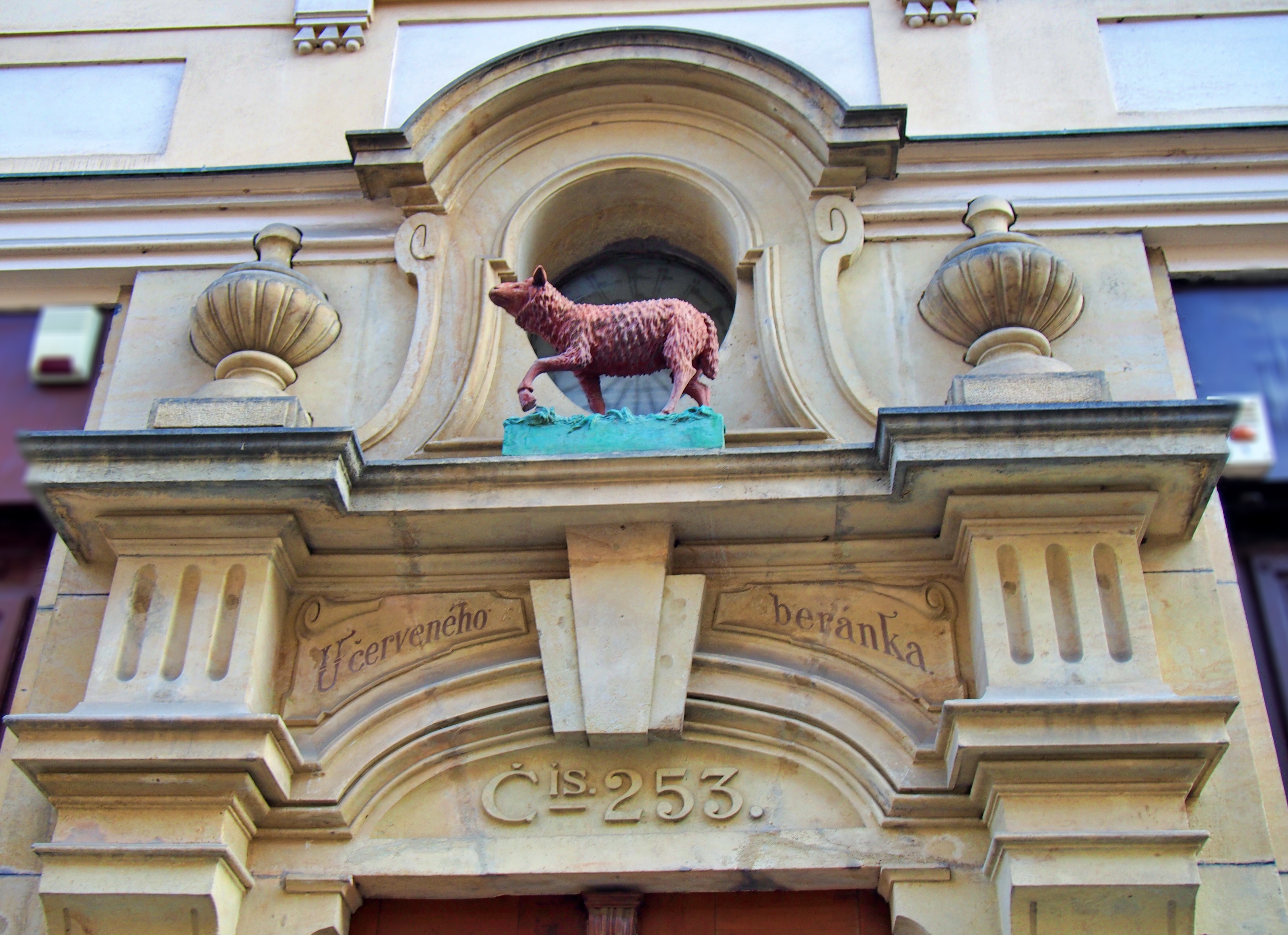
AT THE GOLDEN HOURSESHOE
This house is known for the fact that the first Hradčany pharmacy was here. Notice the golden horseshoes above the door. The house sign still clearly shows the image of Saint Wenceslas on a white horse. If you look well at the picture, the horse has a real horseshoe in gold on one leg.
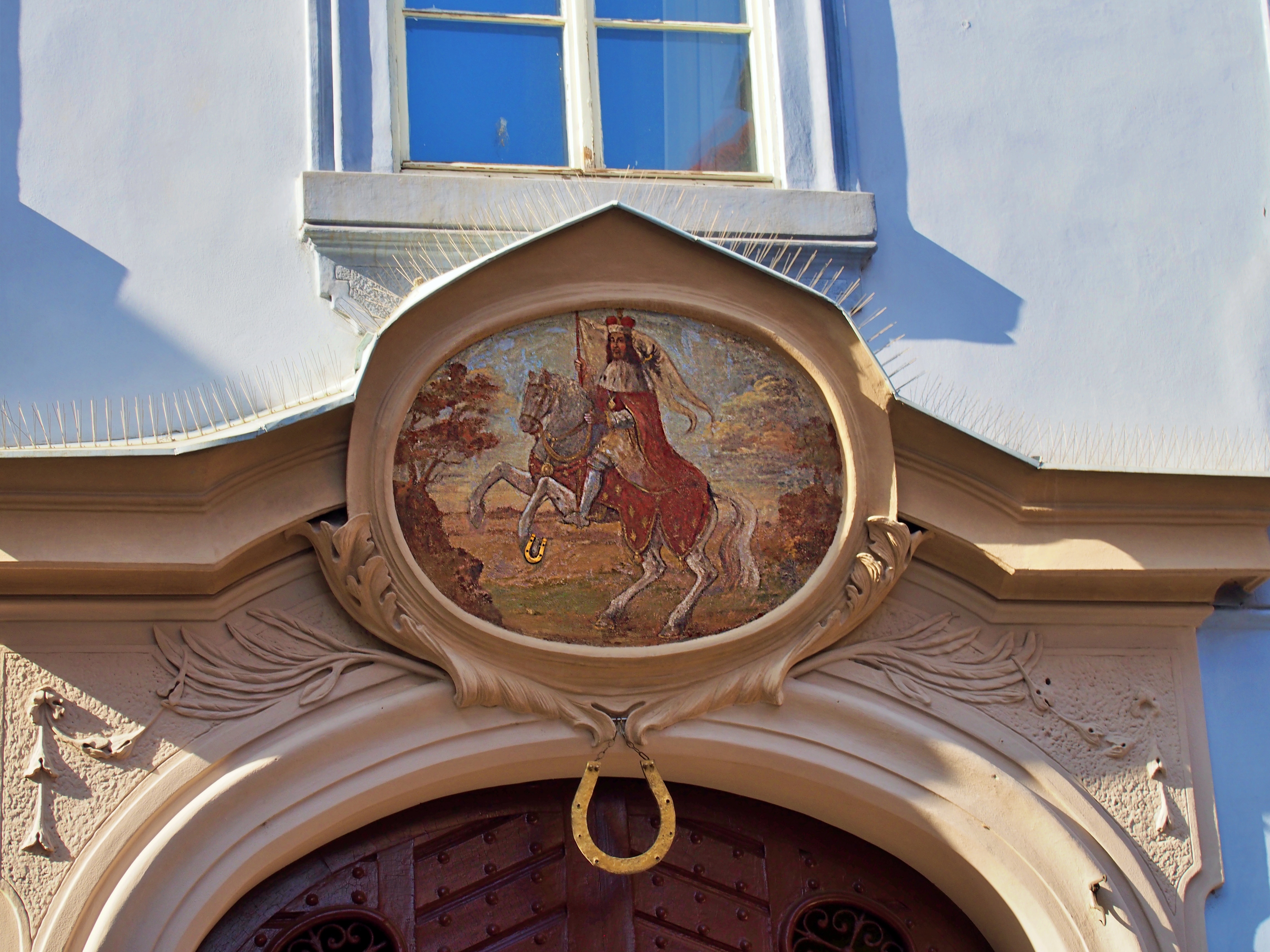
The pharmacy was moved to the next house in the 18th century. Here in the attic, the owner of the pharmacy dried herbs and prepared medicines in the back room. You can find the name of the pharmacist above the entrance to the house at the Golden Lion. His name was Dittrich.
AT THE GOLDEN WHEEL
The golden wheel appeared on the facade of the house in Nerudova Street sometime after the White Mountain. The bicycle was a symbol of wheelwrights, who made bicycles for wheelbarrows, heavy wagons and ladies’ carriages. The carpenters were masters at bending wood. They had to master their tools, but also geometry and complex calculations. However, there were not many of them in Prague. Today, the house is a romantic hotel, with an original well and partially preserved black kitchen.
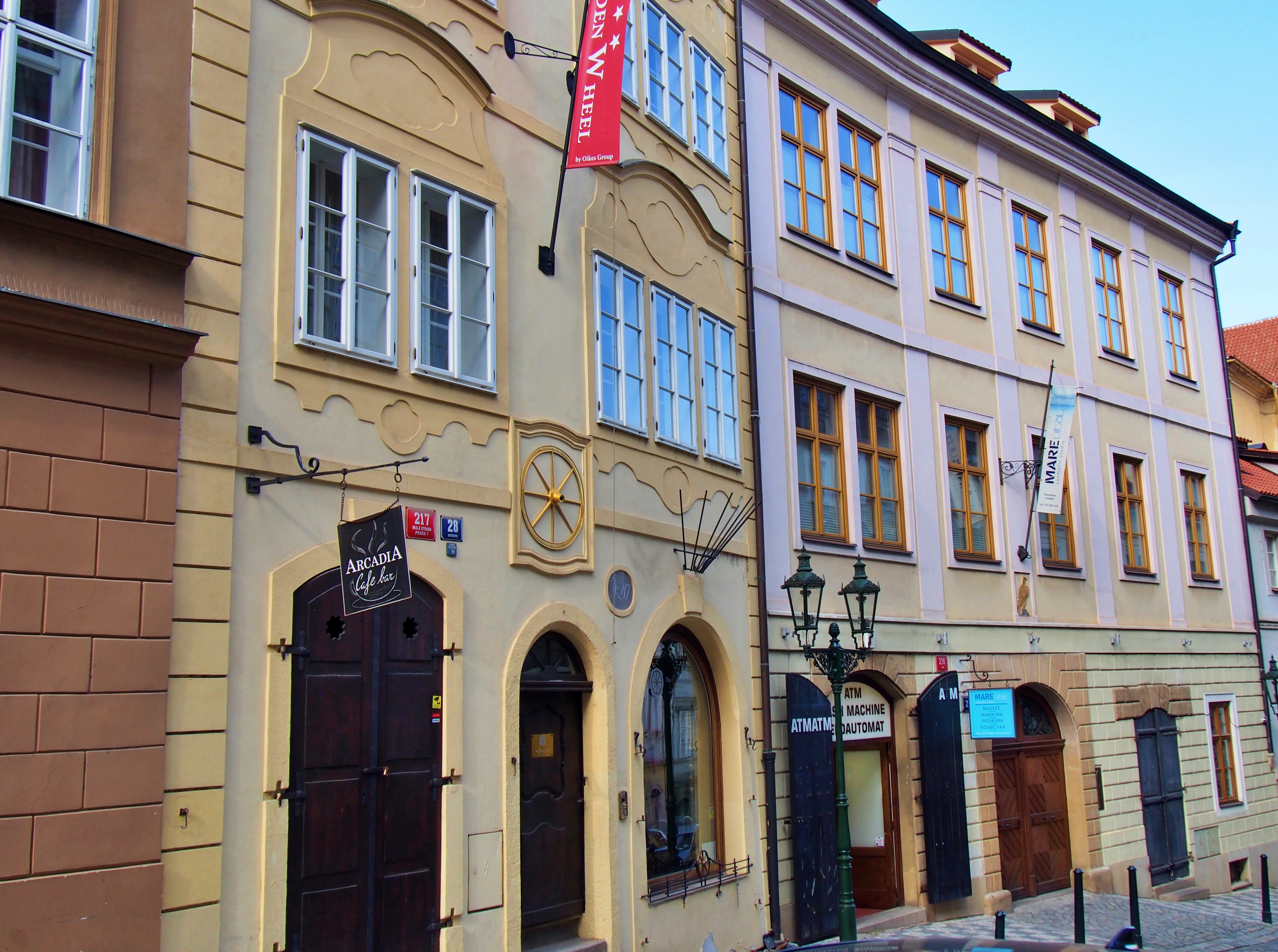
AT THE GOLDEN CUP
The Golden Goblet or Golden Cup was one of the 14 oldest guild signs in Prague. During the Middle Ages, goldsmiths prospered very well. They even had their patron, St. Elijah, their church in Platnéřská Street. Because they worked with precious metals and precious stones, they were very well organized and were among the richest craftsmen. The goldsmith used to live in this house, but the goldsmith Jan Schumann only had the house marked as a symbol of the craft after 1660. It was probably modeled by his son-in-law Giovani Pietro Palliardi, the founder of the Czech branch of the famous builders’ family. And the location in Nerudova Street is also not accidental. Rich burghers, nobles lived all around, crowds of people flocked here to the Castle, as they do today.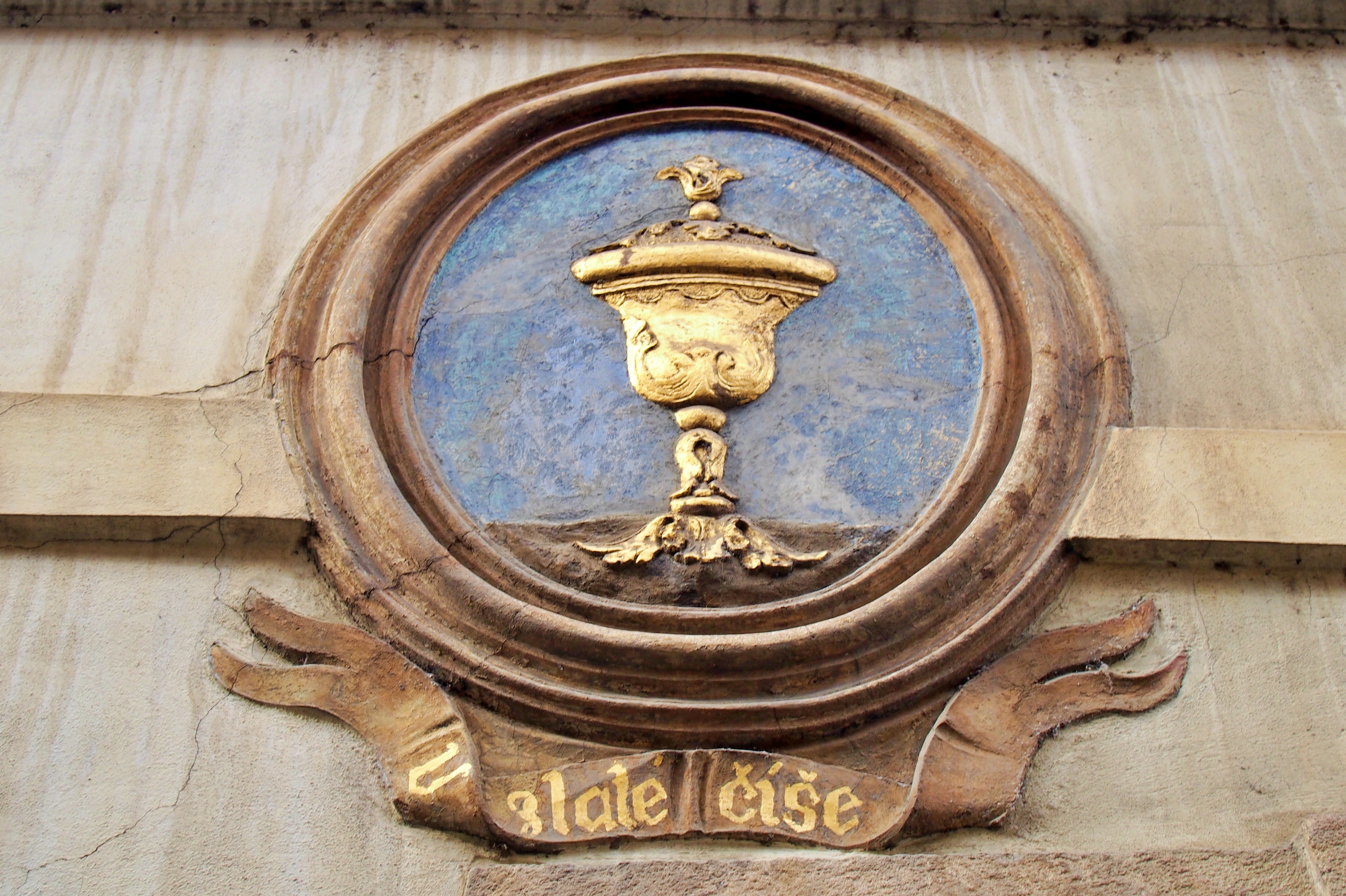
At the Golden Cup in Nerudova Street
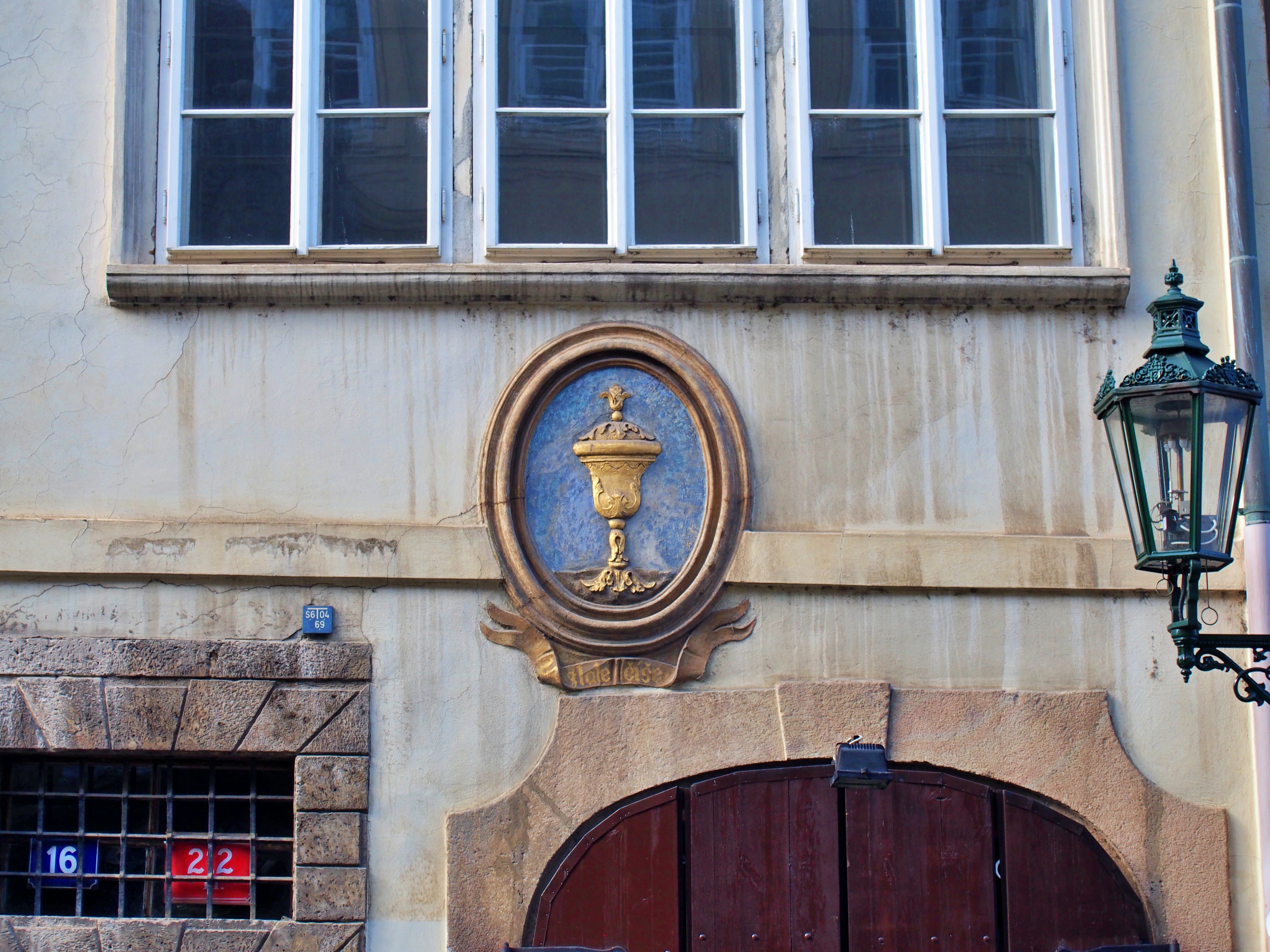
HOUSE AT THE THREE VIOLINS
The history of the House of the Three Violins is rich and dates back to the Middle Ages. During the 17th and 18th centuries, the house was gradually owned by three violin families. The original master, who discovered an empty violin workshop in Malá Strana in 1622, was Tomáš Edligner. Beethoven himself apparently played the violin made in this workshop. Later, the famous violinist Leonard Pradter even worked here. He made violins for the musicians of the nearby Loreta church. According to legend, you can hear night violin concerts of ghosts from Neruda Street at every full moon. On quiet nights, the people of Prague even heard the frantic tones of a violin, played by the spirit of Paganini himself.
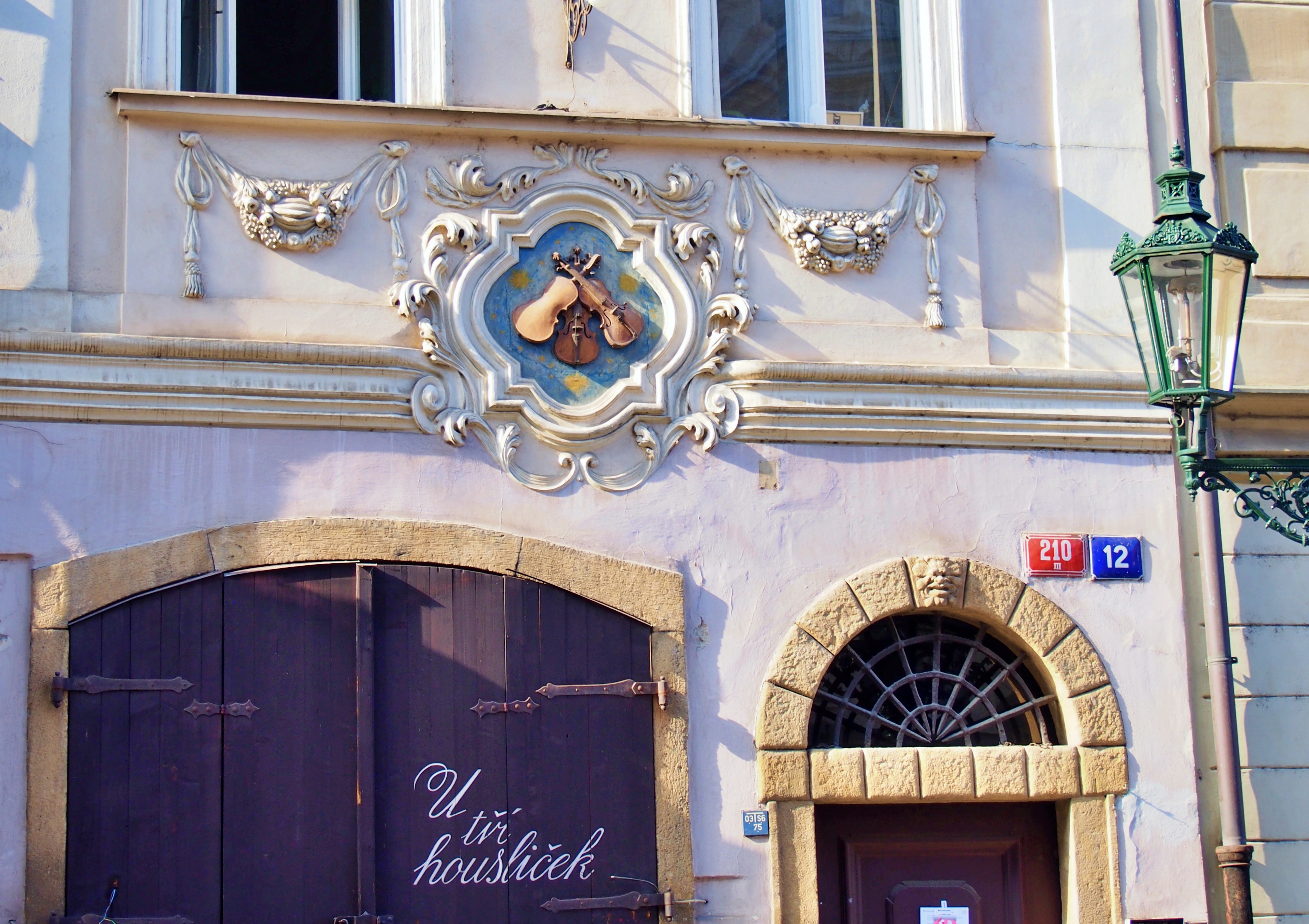
TOMÁŠSKÁ STREET
AT THE GOLDEN PRETZEL
Bakers had pretzel and “calty” in their sign. Don’t you know what “calta” is? This is a type of Old Bohemian pastry, such as a bun, cake, Christmas cake or muffin. Bakers baked all pastries, especially from yeast dough. The house used to be called At Hebenštrajt. In Prague, it was one of the richest merchant families. Hebenštrejt built a house in the 1660s after a fire, and set up a branch there for his son. However, he soon fell into love, brought himself and his family to ruin, and then soon died. The house was called that for decades, until later it was bought by a baker Kryštof Krob in a dilapidated condition. Unfortunately, it did not bring him luck either. Baker Krob got into debt and soon died. Widow Krobová was glad that they had left her living room.

AT THE THREE STORKS
The House of the Three Storks is located on the corner of Tomášská Street and Valdštejnské Square. In the places of today’s house, the monks founded a monastery brewery. It is sometimes stated that it was even the first building in Prague. During the Hussite storms, the monastery was destroyed and the brewery, mostly wooden, burned down. Subsequently, a new, much more magnificent one was built. The brewery ceased to exist in 1541, when it was destroyed by a huge fire, which began its rampage on Malostranské Square. A brand new house was built on the site. At the end of the 1930s, the Wallenstein Pub was established here. The owner of the inn had the storks painted on the facade of the house, but the house became much better known thanks to the later owner – the locksmith. There is also a reputation attached to it.


In addition, the building now houses a luxury hotel, which bears the original name of the house.
VALSŠTEJNSKÁ STREET
AT THE GOLDEN SUN
This Renaissance house became the seat of imperial servants. Among the most important owners was the guardian of the imperial silverware at the court of Rudolf II., Havel Oberšvender. He bought the house three years after Bílá hora and with the neighboring house At the Golden Shield. Today, the building serves the National Pedagogical Museum and the J. A. Komenský Library.
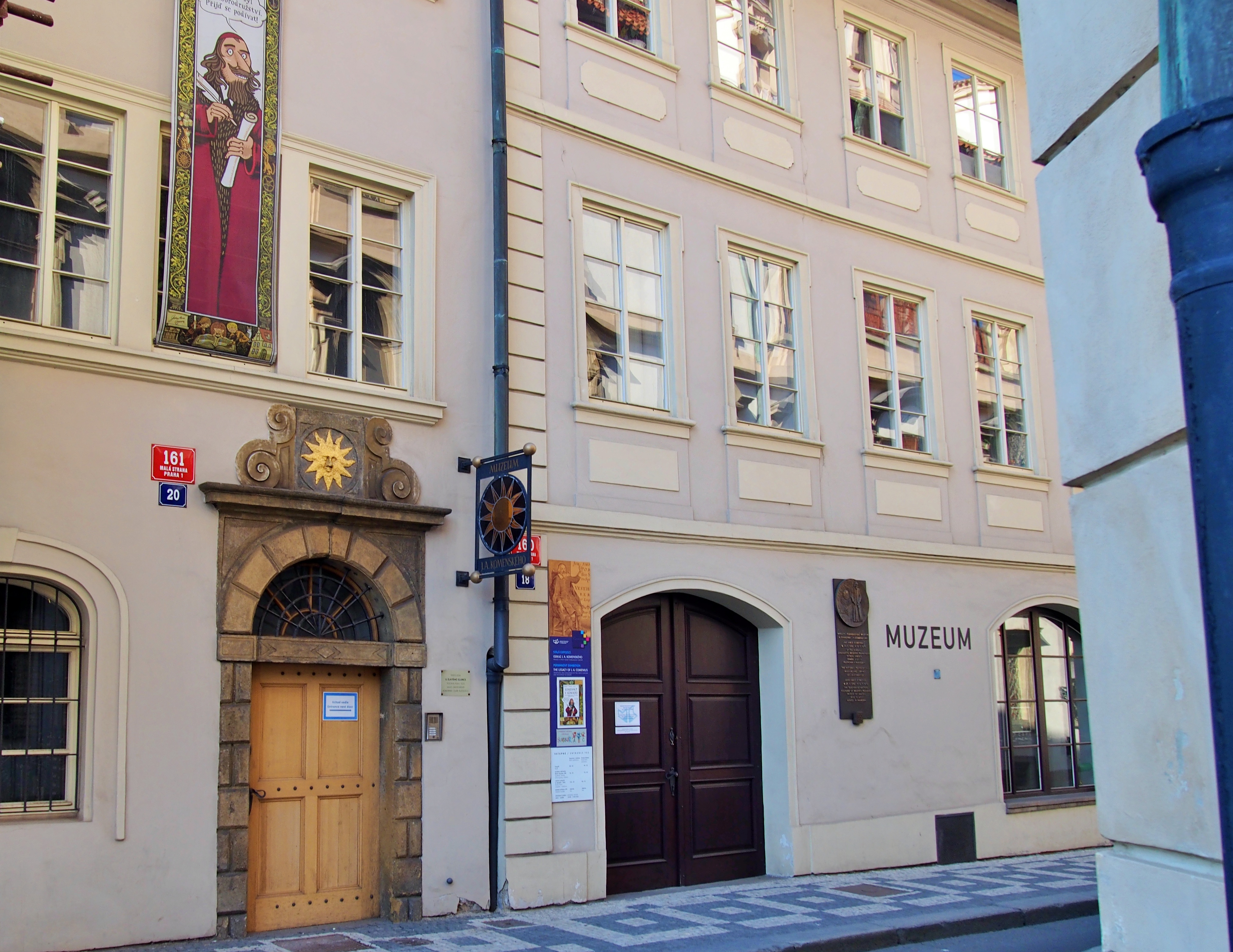
STREET THUNOVSKÁ
From Valdštejnská Street, you can slowly get to the narrow Thunovská Street. It connects Tomášská Street and Castle Stairs.
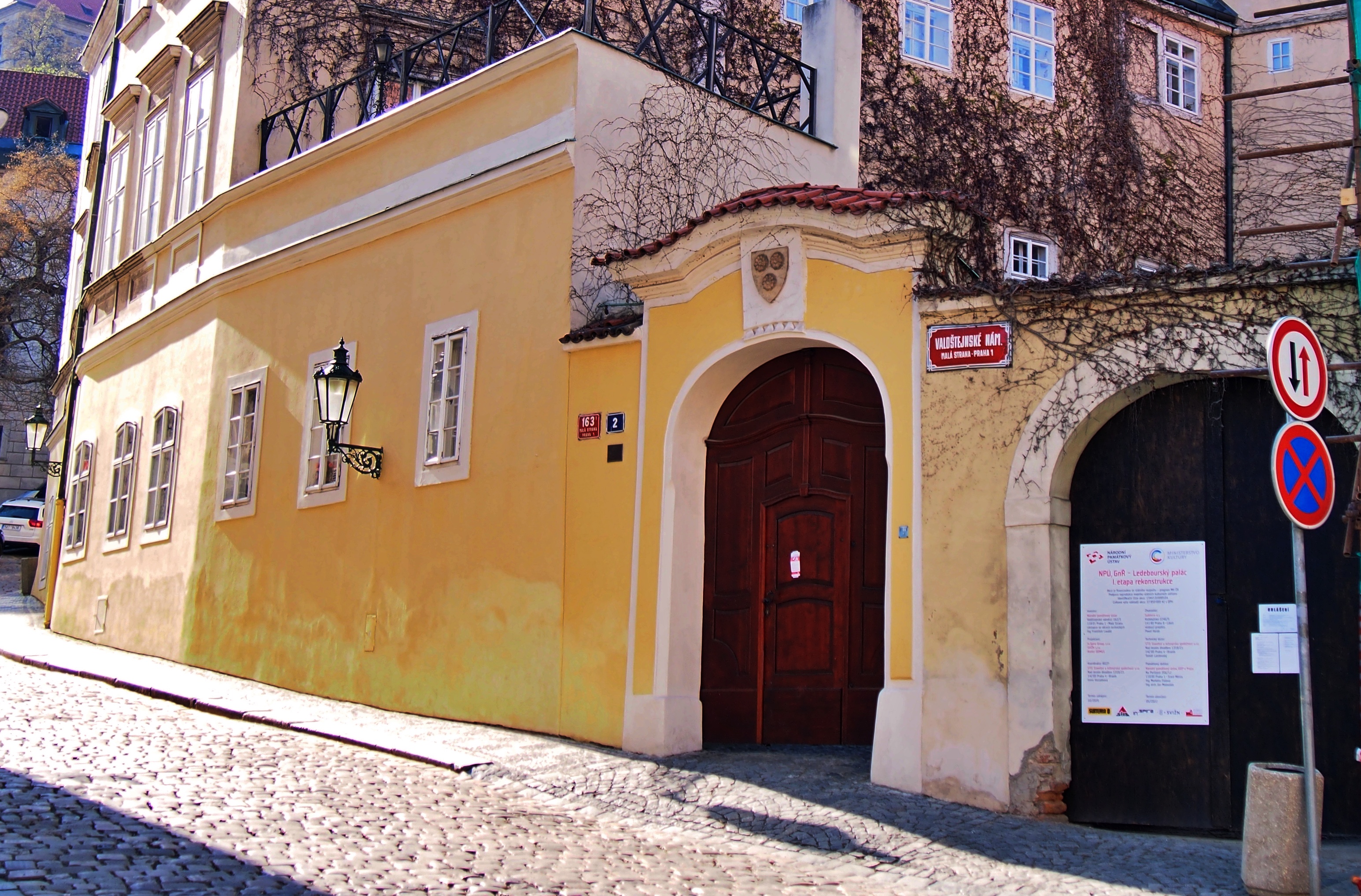
The street was named after an aristocratic family, which used to have another of its aristocratic palaces. There is the Thun Palace, which belongs to the Embassy of Great Britain. A monument on the corner of the street representing the important British statesman Winston Churchill will tell you that.
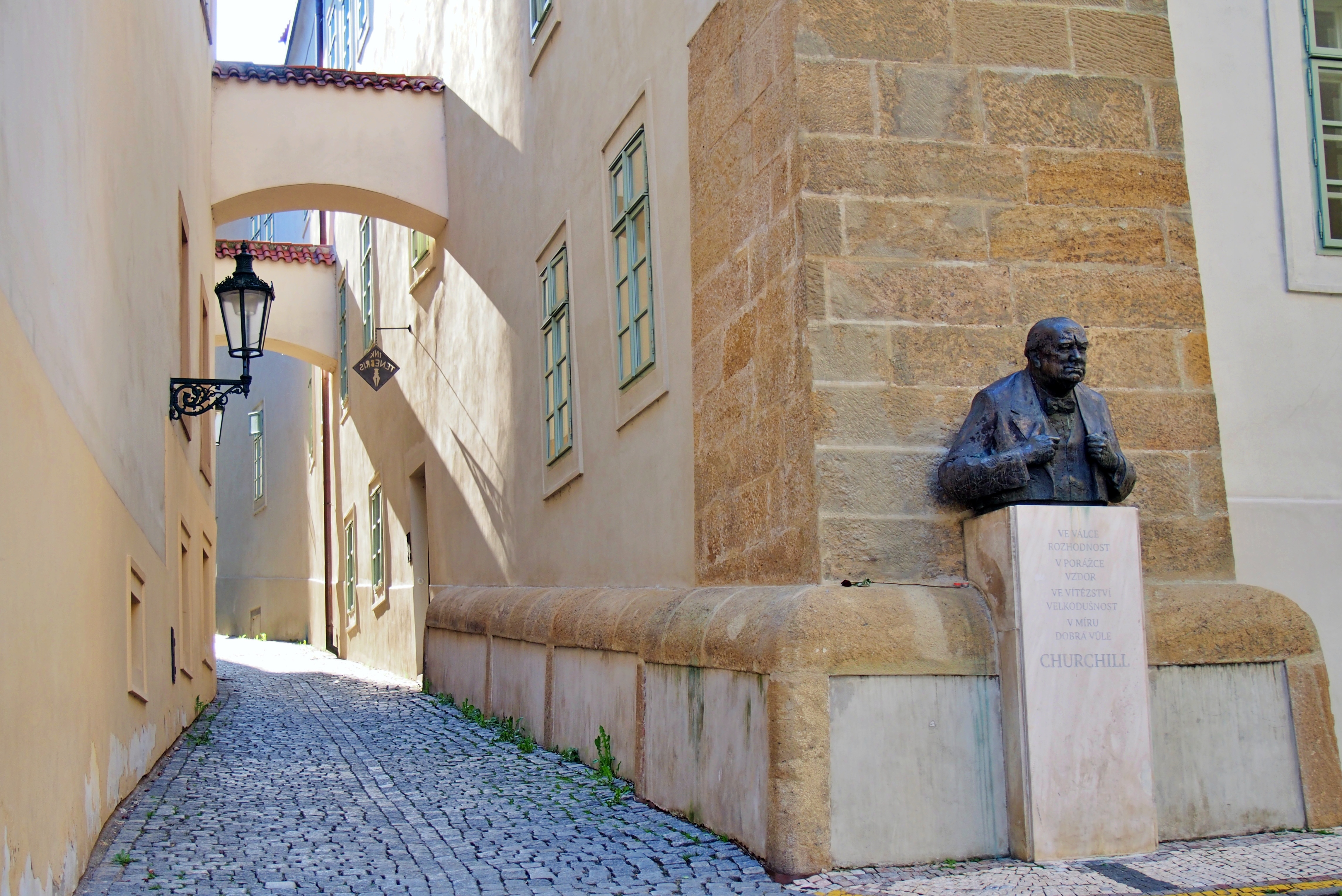
Lift your head up here. There is a “prampouch”. And what is it? This is a brick arch, which is usually between two buildings. It is typical for narrow medieval streets. And it is also equipped with a roof.
And you will slowly approach the castle stairs. In Thunovská Street there were a number of houses with a wide slab under the windows. These were shops of buyers with expensive goods.
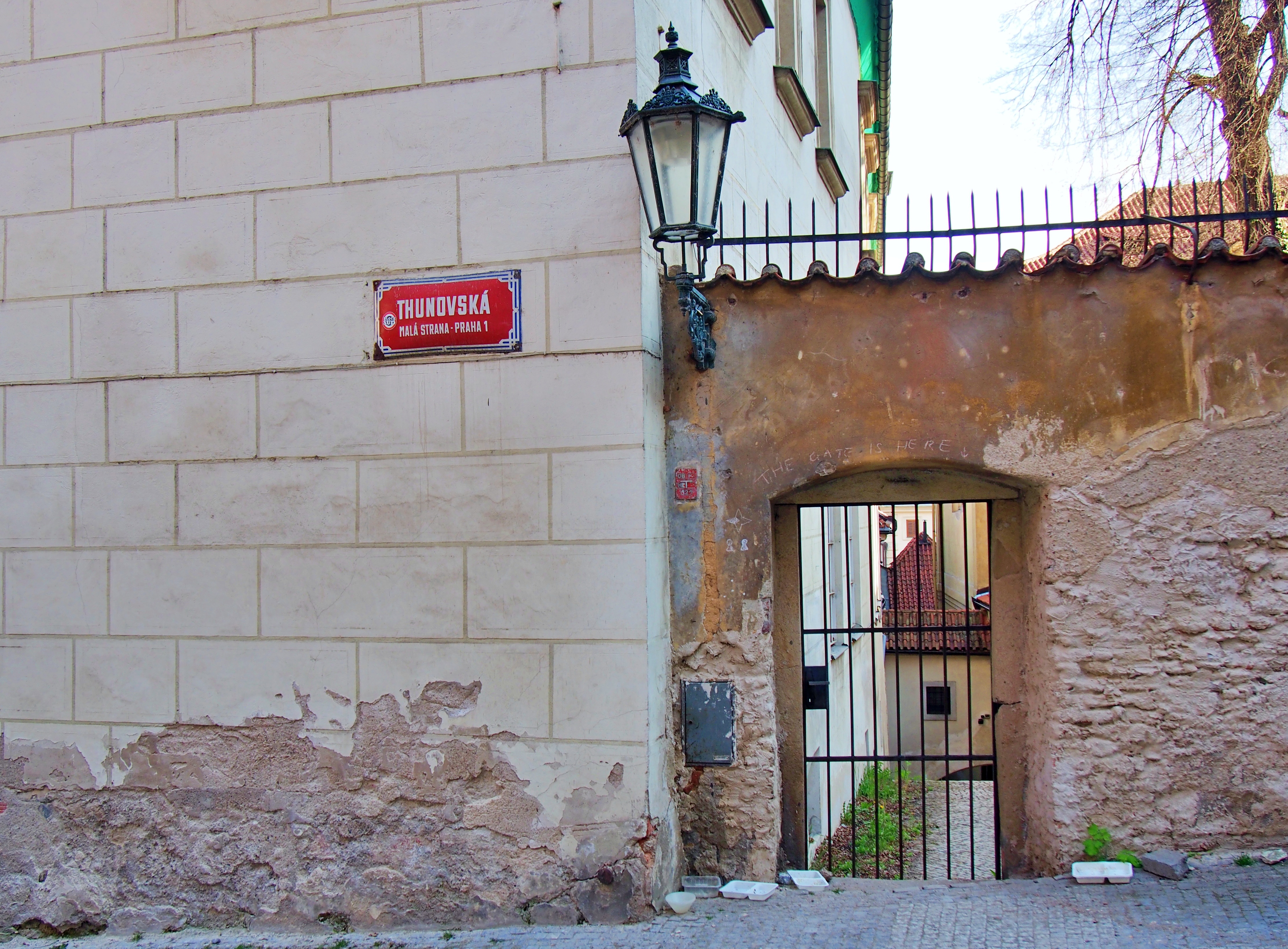

THE HOUSE OF THE KING OF BRABANT
The house has a legendary Prague pub – pub At the King of Brabant. It is named after the patron saint of maltsters. It is said that kings and charlatans came here in centuries in disguise. To this day, he benefits from the legend that Wenceslas IV also went here for a beer. And why is it named after the Duke of Brabant? John I of Brabant was the great-grandfather of Charles IV. and supported brewers and beer brewing. According to legend, he always went to the tavern with his faithful dog and executioner. Why with your executioner? He was said to be a righteous king, and he did not want the people to be deceived in peace from the innkeepers. He had the head beheaded of anyone who gave the wrong measure.
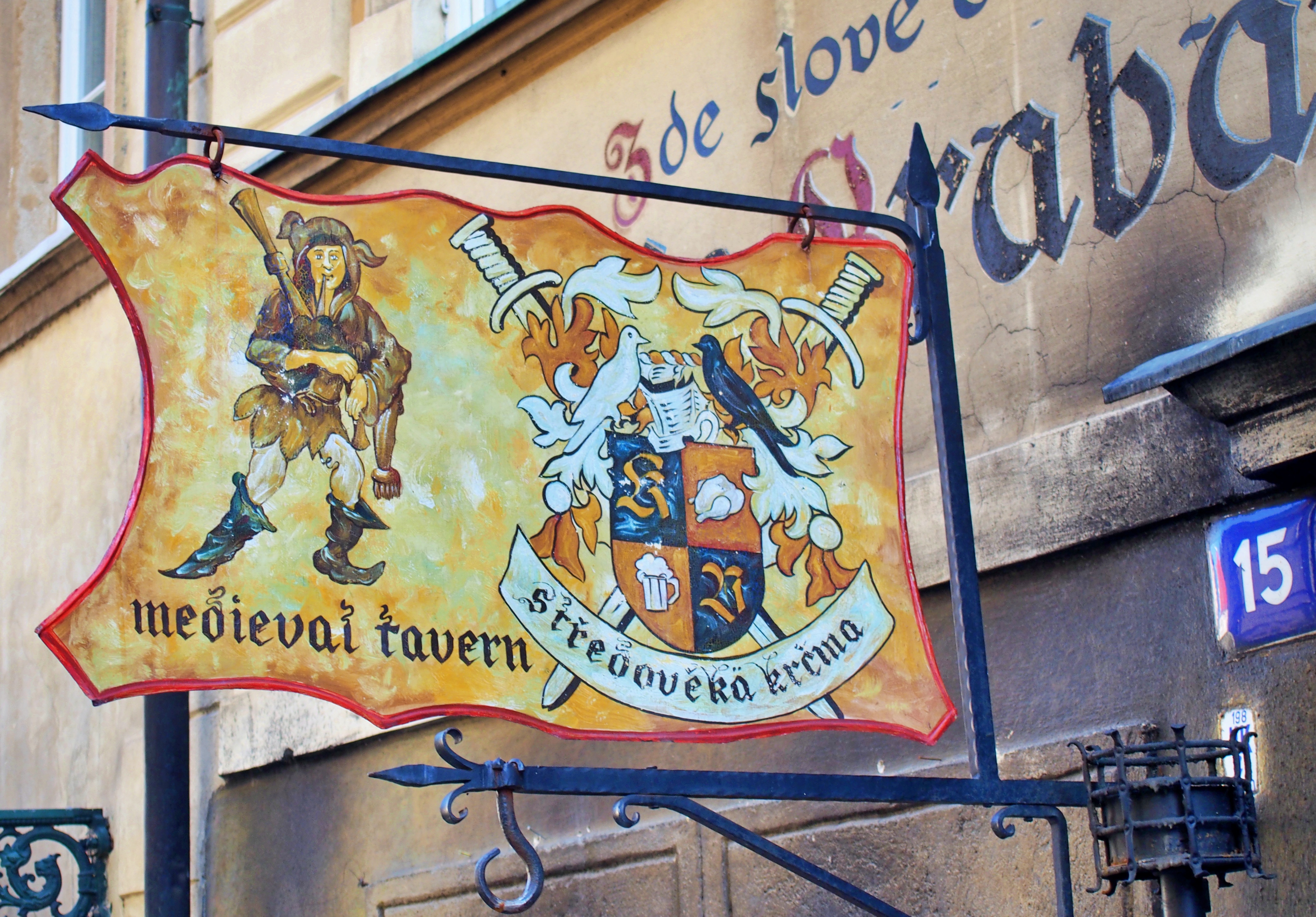
Other historical mentions claim that he went to the tavern in disguise to rest from the environment of the nobility. He drank here with the townspeople and the lower nobility and enjoyed the usual pleasures. Gradually, various legends began to emerge around him and eventually he became the patron saint of beer. This pub was a popular stop for Jaroslav Hašek and his friends, including the painter Josef Lada. However, Jaroslav Hašek was a bit of a problem guest. He often didn’t spend, and sometimes fights broke out around him. He was a fabulator and needed to be the center of attention. Mr. Klucker, too, so their egos met here from time to time. Once they even quarreled that Hasek tore down the image of Wenceslas IV. and tore him apart. Other important guests are said to have been Rudolf II., Wolfgang Amadeus Mozart and Karel Čapek.
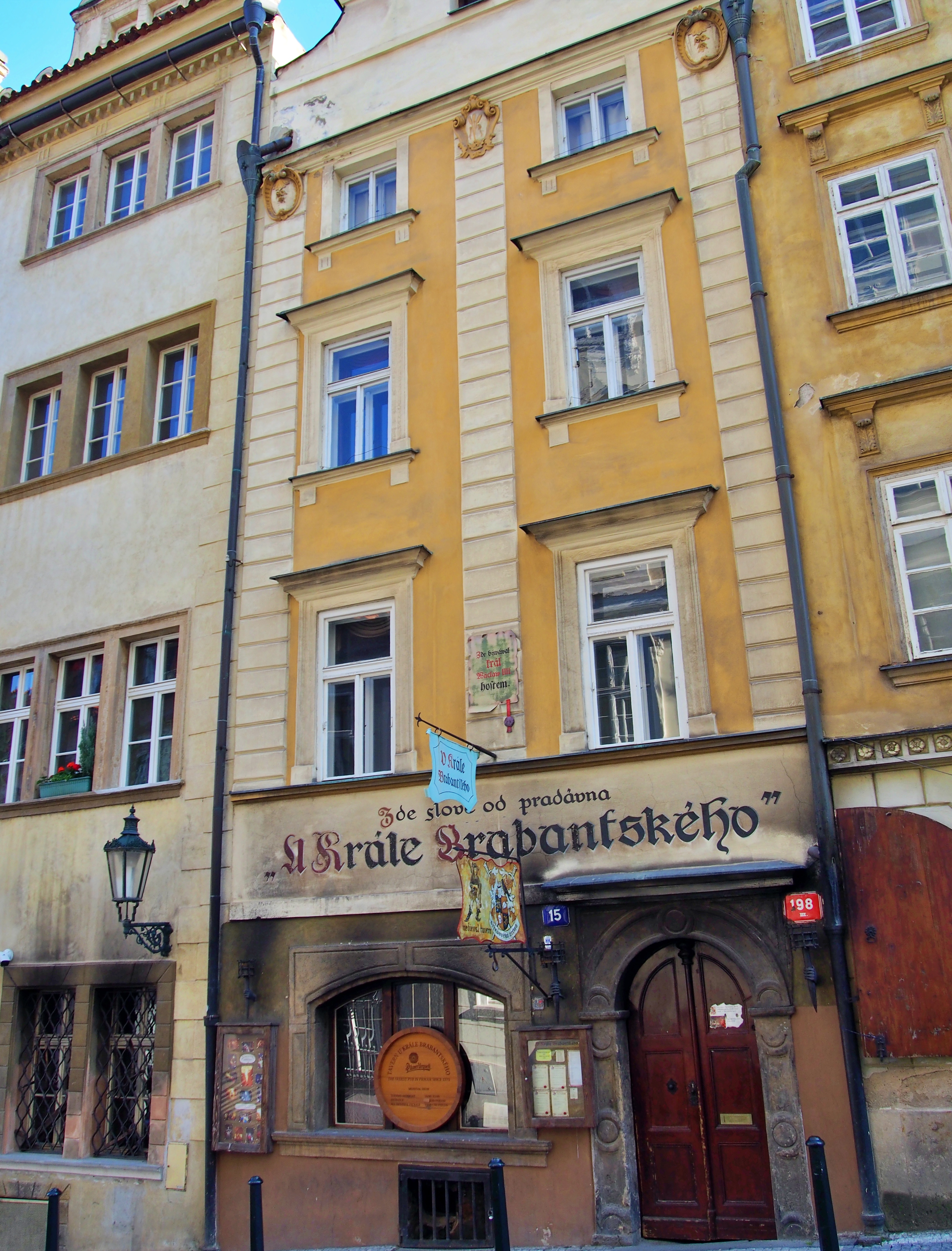
PALACE OF THE LORDS OF HRADEC
The palace is also called Slavatovský. Dilapidated was bought by a powerful nobleman and the highest chancellor of the kingdom, Jáchym of Hradec. At the urging of his wife, he had the house rebuilt and enlarged. And more than once, the burgher house became a stately palace. Jáchym’s grandson then sold the house to Slavat of Chlum. Yes, it was the famous Mr. Vilém Slavata who landed during the defenestration in the dump. In the 18th century, another owner sold the house to the Kingdom of Italy, which set up an embassy here.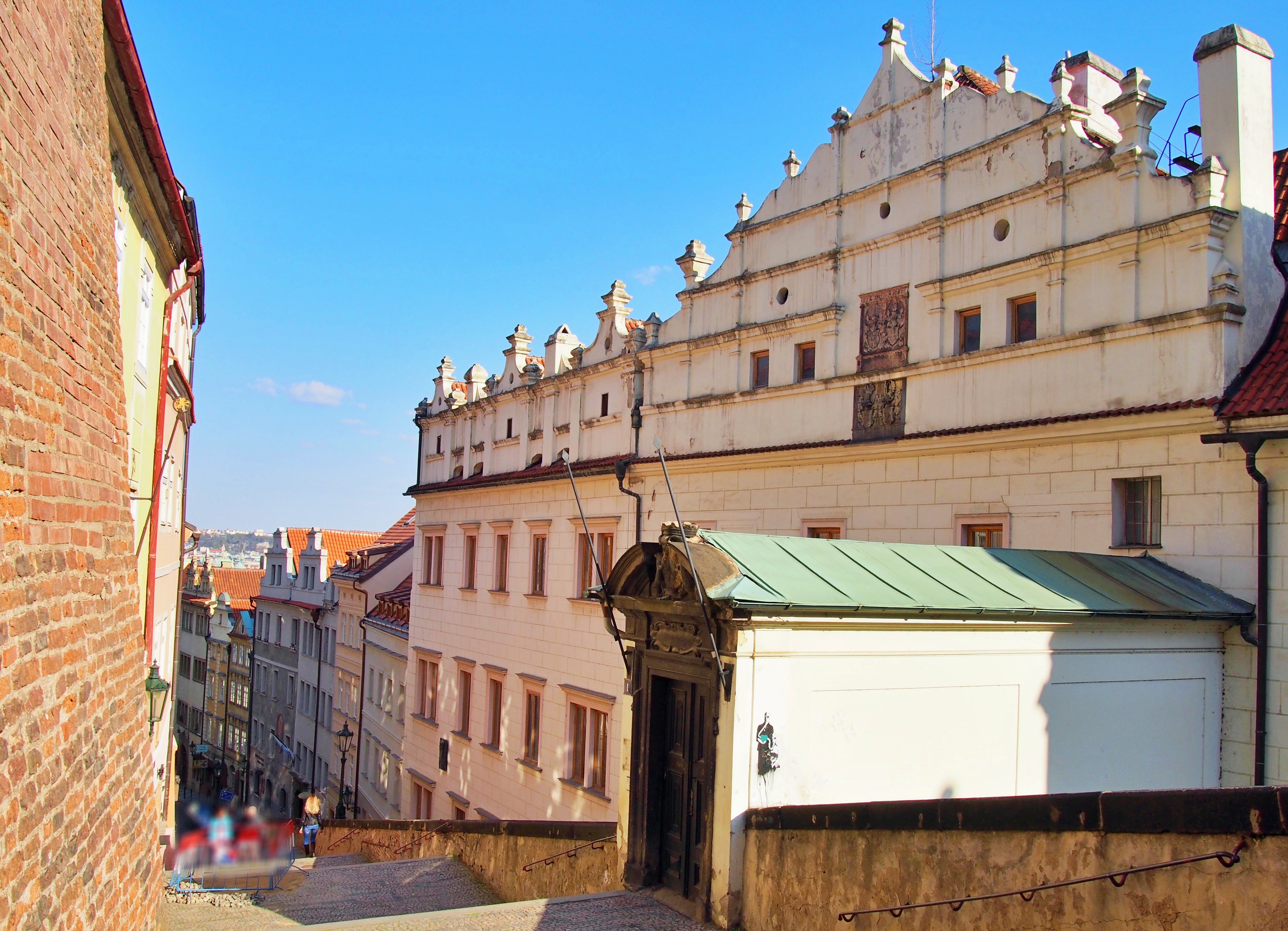
Palace of the Lords of HradecOn the facade of the house you will find a memorial plaque commemorating that the painter and graphic artist Alfons Mucha once lived here. His life’s work is the Slavonic Epic. He contributed to the restoration of Freemasonry in Czechoslovakia. He made theatrical posters, interior designs, stained glass … He was also a good photographer and is considered the founder of the Czech school of classical photography. He is also the author of the first stamps and banknotes of the independent Czechoslovak Republic.
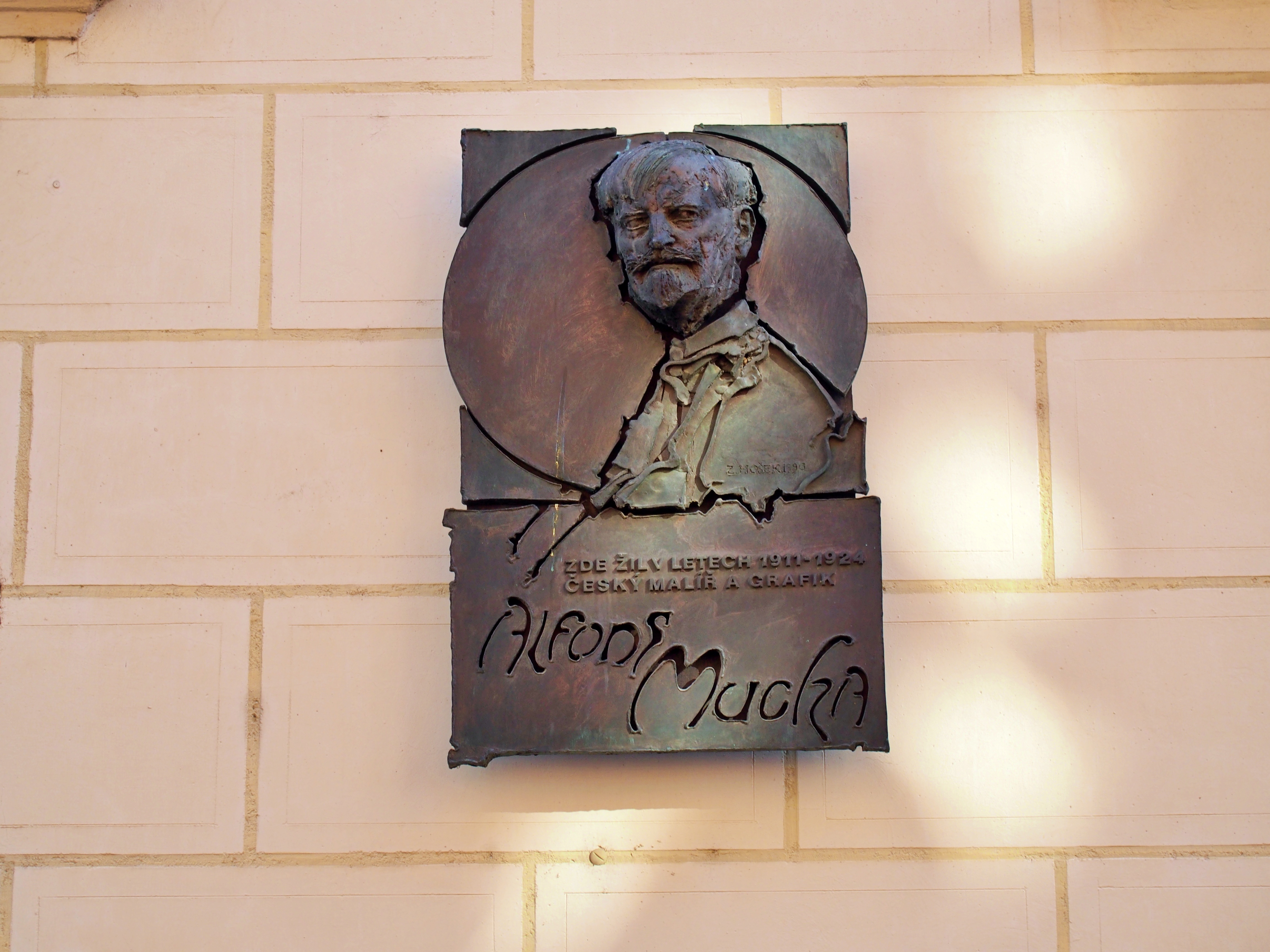
NEW CASTLE STAIRS
They follow Thunovská street. In the Middle Ages, they used to be one of the main routes to the Castle. They are also called “new” in order to differentiate themselves from the Old Castle Stairs. The wall lines the Garden of Eden. There are empty niches in the wall, which were left without sculptural decoration.
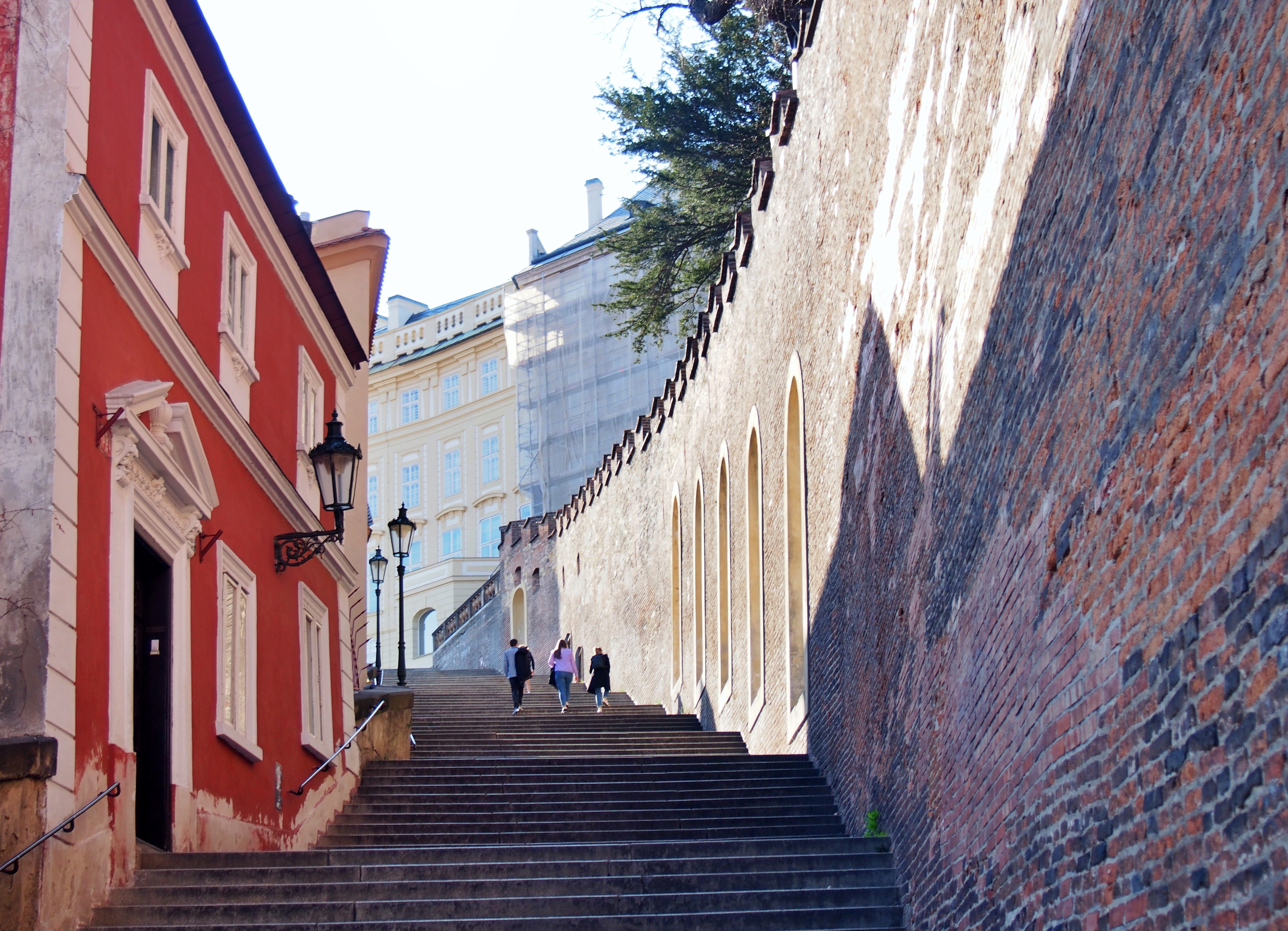
HOW DO YOU GET THERE?
I recommend taking tram 22 to the Pohořelec station and from there take Úvoz Street through Nerudova Street to Malostranské náměstí and from there to other streets. Or you can go the other way around, take the metro to the Malostranská stop and continue past the Valdštejnská riding school to Valdštejnská street.
If you liked the article, I’ll be happy if you share it or leave some comments. 🙂
I would also want to invite you to join me on Instagram and on Facebook.
